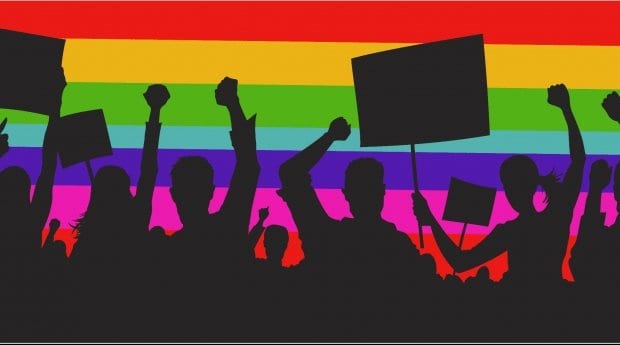After going on strike March 3, workers at Toronto’s York University reached a tentative agreement March 29. Among the provisions the workers fought for, and won, was one that adds LGBT as an equity group in their collective agreement.
That the striking workers had to fight for LGBT equity language at all begs the question — why doesn’t every workplace include LGBT people as an employment equity group?
To answer this, it’s worth examining the history of employment equity programs in Canada.
Federally regulated private-sector industries as well as crown corporations and federal agencies all fall under the Employment Equity Act. Enacted in 1986, the act designates four categories of people who are program targets: women; Aboriginal peoples; persons with disabilities; and members of visible minorities.
Businesses that don’t fall under federal jurisdiction, but have contracts with the federal government — including universities like York — are required to have an equity program in place for the four designated categories under the Federal Contractor’s Program.
David Rayside, a retired professor of political science and sexual diversity studies at the University of Toronto who co-edited a book on equity and Canadian labour, says that he wasn’t aware of any attempt to include LGBT people in the Employment Equity Act. “At the time those things were being debated there was more attention being paid to prohibition and discrimination,” he says. “Rather than in a sense affirmative action to treat the fact of having openly LGBT employees as a positive good.”
But that was almost 30 years ago. Since then, LGBT people have fought for, and won, many of the rights afforded to the heterosexual community, and can choose to be open about their sexual and gender identity in the workplace. LGBT people missing as a category from the act today is an unfortunate hole in the legislation.
Adding LGBT people as one of the categories in the Employment Equity Act would serve firstly as recognition of the importance of including LGBT people in diverse workplace hiring practices.
It would also serve a helpful purpose in tracking how many LGBT Canadians are employed in various federally regulated sectors. Every year, the federal government releases a report outlining the representation of the four categories in the workplace.
Though the reports only capture those industries that fall under the Employment Equity Act, it would provide a snapshot of how well LGBT people are faring in federally regulated sectors and may indicate where the community is flourishing, and where work needs to be done to ensure better representation.
This is not the solution to ensuring LGBT equity in the workplace — far from it. Work still needs to be done at the systemic level to ensure that people in all of the equity categories are fairly represented in Canada’s workplaces.
But formally adding LGBT people to the Employment Equity Act would place them where they should have been in 1986 — as a group that deserves recognition of the barriers they have faced in seeking employment in Canada.
“Adding it to the act would be a big deal,” Rayside says. “That would be very difficult to do, particularly in the current climate.”
Until then, Rayside notes that no company is restricted to using only the categories set out in the Employment Equity Act for their equity programs.
TD Canada and Telus, for example, both have programs aimed at promoting inclusivity for their LGBT employees.
The door is open for any employer to go beyond the equity provisions demanded by the Employment Equity Act — until the legislation catches up with the times.
HG Watson can be reached at hg.watson@dailyxtra.com or @hg_watson on Twitter.


 Why you can trust Xtra
Why you can trust Xtra


